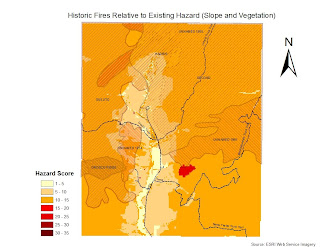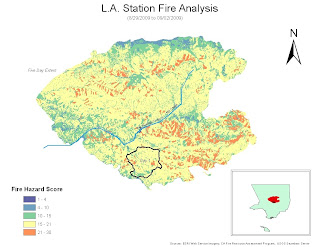
Analysis
The above document compares the precipitation during this season versus the seasonal average in Los Angeles County. The data used in this analysis was based on the data collected from 61 precipitation monitors maintained by the Los Angeles Department of Water and Power. Average precipitation, the recorded precipitation values for the 2010 season, and the difference between the 2010 season and average precipitation made up the three map themes. Two data interpolation techniques were used (splining and kriging), giving a total of six maps.
An elementary statistical analysis shows that precipitation monitors show that 2010 precipitation values were lower on average:

The maps confirm these results graphically. Under both interpolation techniques, it is difficult to come to any conclusions by individually comparing the normal season versus the 2010 season precipitation map. However, the two maps that calculated the difference between 2010 season and average precipitation data were much more clear. Regions with negative values (denoting less precipitation) are prominent in both cases. The kriging method, however, shows more areas less precipitation.
Prior to doing this lab, I had thought that splining would be the most accurate interpolation method for precipitation. I had thought that since the method was based on gradients and a 'best fit surface', it would better capture the natural flow of water. Surprisingly, I found that splining yielded very improbable (sometimes negative) values. These values were the result of an overestimation by the algorithm built into ArcMap. This occurred, for example, when there were many points in the south with high precipitation values while points in the north have very small precipitation values. The resultant interpolated values further north may become negative. The opposite also occured, giving me a value of approximately 200 inches of precipitation-- an extremely unlikely number given that the maximum recorded value was approximately 43 inches. For the same reason, however, I found that projected spline values positioned in the center of the map were realistic. In my opinion, kriging is more accurate because it is based off of a weighted average between points. When large differences in values exist, the kriging projected values are constrained by upper and lower bounds-- resulting in lower margins of error.



